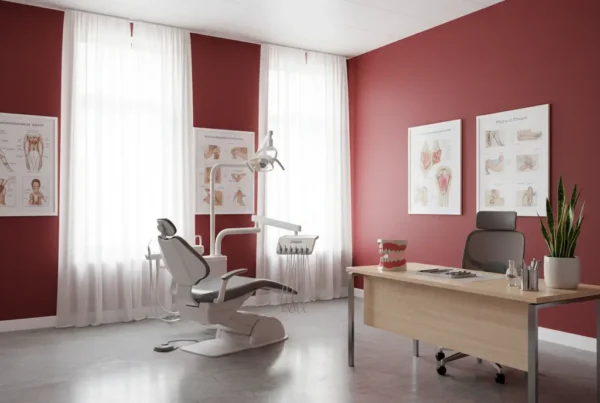Recognizing the Right Time for TMJ Care
Jaw pain, popping sounds, and stiffness may seem like minor annoyances at first—but for many people, they’re early signs of something much more serious: a temporomandibular joint disorder (TMD). The temporomandibular joint acts as a hinge, connecting your jawbone to your skull and facilitating essential functions like chewing, speaking, and yawning. When this joint malfunctions, it can cause a domino effect of pain and dysfunction that worsens over time if left untreated.
Knowing when to move from self-care to professional treatment is critical. This article explores key symptoms to watch for, common misconceptions about TMJ disorders, what a diagnosis entails, and the range of professional treatment options available. We’ll also help you evaluate when it’s time to escalate your care, and how providers like Dr. Brenner’s clinic in Clifton, TX are helping patients regain comfort and function through personalized, evidence-based treatment plans.
When Symptoms Signal Something More Serious
Not all jaw pain is created equal. A dull ache after chewing gum may go away on its own, but persistent symptoms are your body’s way of asking for help. The three most common indicators that you need professional care are frequency, intensity, and interference with your daily routine.
If your jaw clicks, pops, or locks up regularly, it’s time to pay attention. Many patients ignore these symptoms until pain becomes constant or their jaw stops opening and closing properly. When discomfort persists for more than two weeks or disrupts eating, speaking, or sleeping, professional evaluation is warranted.
Warning signs that it’s time to call a dentist include:
- Ongoing jaw pain or tightness
- Clicking, popping, or grinding noises when opening or closing the mouth
- Limited jaw movement or locking
- Frequent headaches or earaches without clear cause
- Pain while chewing or speaking
These signs point to potential joint inflammation or misalignment, and early treatment can prevent the condition from becoming chronic. With a timely diagnosis, patients can often avoid invasive procedures and achieve relief through conservative care.
Misconceptions That Delay Care
One of the biggest obstacles to early intervention is the belief that TMJ pain is “normal” or will go away with time. Many people assume it’s caused by stress or teeth grinding and attempt home remedies indefinitely—only to find themselves in more severe pain months later.
The truth is, while temporary jaw discomfort can result from stress or overuse, chronic TMJ pain signals a deeper dysfunction. Ignoring it can lead to long-term joint damage, facial pain, and complications like arthritis or misaligned bites. It’s especially important to note that TMD is more prevalent among women aged 20–40, likely due to a combination of hormonal, anatomical, and behavioral factors.
Educating yourself and seeking timely care can prevent months or even years of avoidable pain. Instead of waiting until your condition requires surgery or long-term therapy, early assessment by a specialist can provide you with a clear diagnosis and a non-invasive treatment plan that works.
When Home Remedies Aren’t Enough
Initial self-care for TMJ symptoms—such as eating soft foods, applying heat or ice, avoiding jaw overuse, and doing gentle stretches—can be helpful. But when pain or dysfunction continues despite these efforts, it’s time to move on to clinical evaluation.
TMJ disorders can progressively worsen without intervention. As the joint becomes more inflamed or misaligned, complications like muscle tension, disk displacement, or even degenerative joint disease can develop. These issues are more difficult to reverse and may require more intensive treatment down the line.
Signs home care is no longer effective:
- Pain lasting more than two weeks despite rest and self-treatment
- Worsening symptoms with daily activities
- Difficulty eating, yawning, or speaking
- Radiating pain to the neck, shoulders, or ears
At this point, continuing with home remedies can delay recovery and increase frustration. Consulting with a TMJ-specialized dentist can provide both answers and access to advanced tools that go beyond what’s possible at home.
Diagnosing TMJ Disorders: A Detailed Process
TMJ disorders can be complex and multifactorial. That’s why accurate diagnosis is essential. Unlike a cavity, which can be easily identified with an X-ray, TMJ dysfunction requires a combination of diagnostic techniques and clinical experience.
TMJ symptoms can mimic other conditions like ear infections, sinus issues, dental decay, or migraines. A misdiagnosis can lead to ineffective treatment and prolonged suffering. That’s why a specialized TMJ exam includes a comprehensive health history, clinical palpation of the jaw muscles and joints, imaging (such as 3D cone beam scans or MRI), and sometimes range-of-motion assessments.
This deeper diagnostic approach helps distinguish between muscle-based (myofascial) pain, joint-based issues like disc displacement, or degenerative conditions such as arthritis. It also helps rule out other causes of pain, ensuring that the right diagnosis leads to the right treatment.
Strategic, Personalized Treatment Plans
Once a diagnosis is made, the goal is to implement a plan that’s both effective and minimally invasive. At Dr. Brenner’s office, this starts with a thorough discussion of the patient’s goals, daily habits, and contributing factors such as posture, stress, or nighttime clenching.
Non-surgical treatments form the backbone of most TMJ management strategies. These include oral appliances (also called nightguards or splints), jaw exercises, posture correction, anti-inflammatory medications, physical therapy, and stress-reduction techniques. The key is choosing the right combination based on the patient’s symptoms and lifestyle.

Conservative TMJ treatments may include:
- Custom occlusal splints to reduce clenching and stabilize the jaw
- Therapeutic jaw exercises to improve mobility
- Trigger point massage and physical therapy for muscle relief
- NSAIDs or muscle relaxants to manage inflammation
- Stress-management techniques like meditation or biofeedback
This integrated approach not only addresses current pain but helps prevent recurrence. For more complex cases, referrals to oral surgeons or pain management specialists may be appropriate, ensuring a full continuum of care.
Escalating Treatment: When and Why
Knowing when to escalate treatment from conservative to more advanced options depends on how the patient responds over time. Most TMJ disorders respond well to non-invasive therapies within 6–12 weeks, but persistent symptoms or physical changes in the jaw may require additional intervention.
Indicators that a more aggressive treatment path may be necessary include continued joint clicking with locking, failure of splint therapy, or radiographic evidence of joint degeneration. In these cases, minimally invasive options such as joint injections, arthrocentesis, or in rare cases, surgical correction may be recommended.
Close monitoring and reassessment are vital. Regular follow-ups help track progress, adjust therapy as needed, and ensure that the patient isn’t continuing a treatment path that isn’t delivering results. Flexibility in care plans ensures that the treatment evolves as the patient’s condition does.
Where to Find Expert TMJ Help
Not all dentists are trained to diagnose and treat TMJ disorders. That’s why finding a provider who specializes in craniofacial pain or TMJ therapy is critical. Clinics like Dr. Brenner’s in Clifton, TX offer dedicated expertise, advanced imaging technology, and a collaborative approach to care.
Working with an expert means getting the benefit of tailored therapy, faster results, and fewer setbacks. These providers also have referral networks including ENTs, neurologists, physical therapists, and oral surgeons to ensure every patient gets the right level of care—when they need it.
What to expect from a specialist TMJ evaluation:
- A thorough health and dental history review
- Hands-on assessment of jaw motion and muscle tenderness
- 3D scans or imaging to evaluate the joint and surrounding structures
- A personalized plan with short- and long-term goals
This level of care ensures that patients are not left guessing, and that every step of the process—diagnosis, treatment, follow-up—is grounded in evidence and collaboration.
Preventing Long-Term Complications
TMJ disorders, if ignored, can lead to long-term complications like joint degeneration, arthritis, chronic facial pain, or changes in bite alignment. These complications often require more aggressive treatment and may have permanent effects on oral function or appearance.
Early, conservative treatment is the best defense against these outcomes. Using a combination of splint therapy, physical therapy, lifestyle modification, and patient education, providers can help reverse symptoms and restore comfort before damage becomes permanent.
Prevention also means recognizing flare-ups early and maintaining regular care. Patients who’ve experienced TMJ pain in the past benefit from periodic check-ins with their provider and continuing their home care routines even after symptoms subside. Like managing any chronic condition, consistency is key.
Conclusion: Take Action, Find Relief
TMJ pain may start small, but left unchecked, it can impact every aspect of daily life. From difficulty chewing to disrupted sleep and chronic headaches, its effects are far-reaching. The good news? With timely diagnosis and targeted care, relief is absolutely possible.
Whether your symptoms just began or have been building over months, the best step you can take today is to speak with a provider who understands TMJ disorders inside and out. At Dr. Brenner’s practice, we’re here to guide you from uncertainty to clarity—and from pain to progress. Don’t wait for the problem to get worse. Let’s address it together, and give you the tools to get back to living fully.
Book Your Consultation Today!
Dr. Bethaney B. Brenner DMD
8 Milford St, Burlington, CT 06013
FAQs
How do I know if my jaw pain is TMJ-related or something else?
Persistent jaw pain accompanied by clicking, locking, or difficulty opening and closing your mouth often indicates TMJ issues. A specialized evaluation with a TMJ dentist can help differentiate it from other conditions like ear infections or sinus problems.
Can TMJ go away on its own?
Mild symptoms may improve with rest and home care, but moderate to severe TMJ disorders typically require professional evaluation and treatment. Ignoring persistent symptoms can lead to long-term complications.
Are there risks to treating TMJ late?
Yes. Delaying treatment increases the risk of chronic pain, joint damage, and limited jaw function. Early intervention is more likely to be non-invasive, effective, and affordable.





